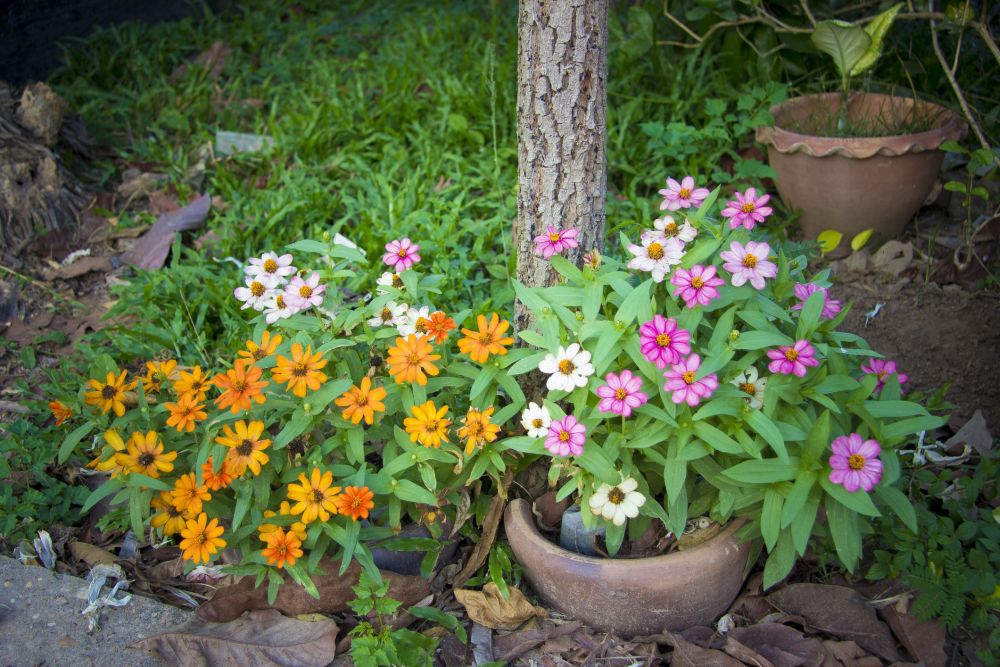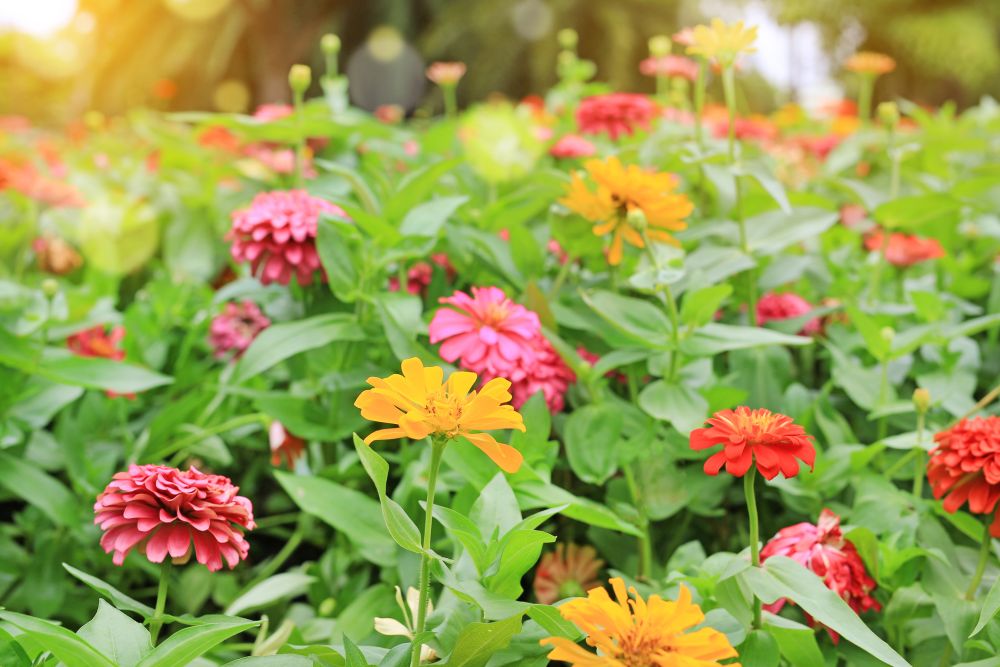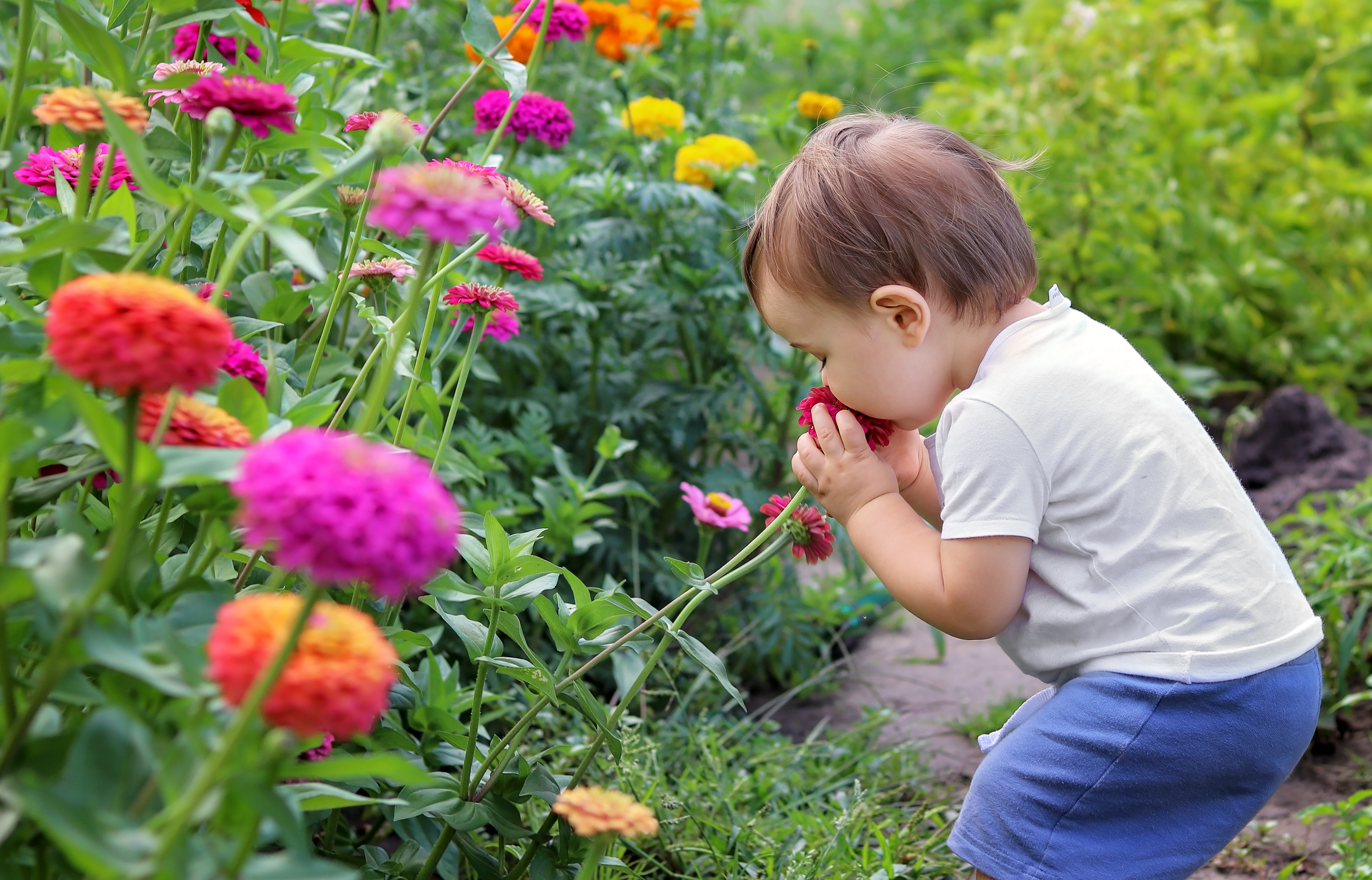Creeping Zinnia Care: How To Grow And Care For Creeping Zinnia Flowers
The name creeping zinnia tells you almost everything you need to know about this versatile and attractive plant. However, there’s more to this annual than just a covering plant with some bright yellow blooms. Even though its cheery flowers remind you of daisies, the creeping zinnia has a more robust growth and low care demands than the fussy daisy.
It’s no wonder then that this zinnia is pulling the carpet from under other more popular flowering plants. You can see it in balconies, patios, rock garden beds, planters, and hanging baskets. It requires little care and acts as an excellent companion plant or ground cover. Many people grow it around the edges of flower beds to punctuate your roses, geraniums, or lilies. In fact, the more you understand these versatile annuals, the more use you’ll find for them in your garden. So let’s take a deeper look at the amazing creeping zinnia and see how easy it is to grow and care for it in your garden.
All About Creeping Zinnia
The creeping zinnia (Sanvitalia procumbens) is native to Mexico, Guatemala, and other Central American nations. This explains why it’s known sometimes as the Mexican creeping zinnia. The annual plant grows to about 6 inches above the ground and covers three times that in width. So it makes a perfect ground cover or backdrop for more showy flowering plants.
With its craving for full sun and demand for warm weather conditions, you can grow this zinnia in zones 9 to 11 and get wonderful results. As long as they get their fill of the sun, they’ll happily cover the ground with their lush green foliage and bright yellow flowers.
The small and veined leaves are only one inch in length and about half that in width. But they create a dense mat that practically hides any barren patch in your garden. However, come summer and you’re in for a spectacular show of gold blooms.
The flowers resemble sunflowers but on a very small scale. When in full bloom, the zinnia flower is only a half-inch in diameter. The yellow petals are stubby and grooved and circle a brown or black disc in the middle. Some varieties have orange or gold petals instead of yellow. But all cultivars share one thing in common, they have a long blooming season. The flowers remain in bloom until the fall.
Creeping Zinnia Varieties
Their long blooming season makes the creeping zinnia an ideal choice for a background plant. However, the small flowers don’t do well in floral arrangements. They are too tiny to create a lasting impression and they don’t last long once you’ve cut them. Apart from that, the creeping zinnia has a lot going for it. Not least of which the many varieties you can grow and use in just about any landscape you can think of. Here are some of those varieties.
- Orange Sprite: This cultivar belongs to the sprite series and is a crossbreed between two species that grow mainly in Guatemala. The mature cultivar barely grows over 4 inches and is not as hardy as the other varieties. But at the same time, it can tolerate partial shade and doesn’t require as much sunlight as your typical zinnia. The flowers are bright yellow with a gold center.
- Gold Braid: The leaves of this cultivar are dark green and pointed. The flowers are yellow and have a black disc in the middle. They bloom in abundance and the flowering season starts in the early summer and lasts way into the fall. The mature plant grows to about 8 inches high and one and a half feet across. It tolerates high temperature and humidity levels.
- Irish Eyes: A romantic name for a delightful cultivar with bright orange-yellow flowers and a fuzzy green disc in the center of each flower. The plant averages 6 feet high and spreads to between 12 to 18 inches across. It only takes 6 weeks for it to reach maturity and start blooming. However, their flowering season varies depending on the environment. You could have them flowering in the summer or the fall. The flowers don’t stay in bloom as long as the other cultivars.
How to Grow Creeping Zinnia
To grow the creeping zinnia in your garden, you need to get your hands on their seeds. That’s often an easy task if you have access to mature plants growing near you. Once the flowers start to fade, seedheads grow out of the flowers and remain on the plant until the seeds are ripe and dry. Gather those seeds and let them dry on a towel in a dark and warm place.
- The best time to sow the seeds of creeping zinnia is in the early spring. If you’re worried about frost, you can start them indoors before the last frost.
- Choose a sunny spot in your garden that gets at least 6 hours of sunlight on a normal day. Make sure the soil temperature is above 60 degrees Fahrenheit.
- Break the surface of the soil and turn the top 6 inches before you sow the seeds. You can add organic materials to the soil for more blooms.
- Dig small holes about a half-inch deep and drop one seed in each hole.
- If you’re planting them as a ground cover, space the seeds 8 inches apart to create a thick and dense mat of creeping zinnia plants.
- Cover the seeds with a thin layer of soil. The seeds need sunlight to germinate, so don’t plant them too deep in the soil or cover them with too much soil.
- Water the soil to get it moist. Keep the soil moist until the seeds germinate.
- It takes between two to three weeks for the zinnia seeds to finally germinate.
- After 4 weeks, reseed any spots that haven’t sprouted yet. The younger plants catch up quickly and will mature almost at the same time as the rest of the patch.
Creeping Zinnia Care
Unlike sunflowers or daisies, the hardy creeping zinnia thrives in less than ideal conditions. The annual plant has a high tolerance for drought, hot temperatures, and excessive humidity. But since you’re growing it for its abundant ornamental value, you’d need to make sure the plant is not stressed or struggling.
Soil
As long as your soil is well-drained and doesn’t retain water more than necessary, the creeping zinnia will have no trouble growing and thriving. Even in less fertile soil doesn’t pose a big hurdle for this annual. And to improve the chances of having an abundance of flowers, consider adding a thin layer of peat moss to the soil before you sow the seeds. It’s not a prerequisite but the results will be more than pleasing. The same goes for the soil pH. As long as the readings hover around 6 or 6.5, you’re good to go. Neither acidic nor alkaline soil is good for the hardy zinnia. As for clay soil, you can amend it with coarse sand to loosen its texture and improve its tilth.
Light
It usually takes the creeping zinnia between 8 to 12 weeks from the time you plant the seeds to the plants to mature and start flowering. This is why it doesn’t grow in temperate or even mild zones. Creeping zinnia requires plenty of sunlight throughout the summer and early fall. In zones below 9, it’s not possible to provide 6 hours of sun consistently from the early spring until the fall. So make sure you plant your zinnia in a sunny spot facing the south or west. While some cultivars tolerate partial shade, for the most part, you can’t go wrong with the full sun. And while high temperatures are not a problem, make sure the temperature doesn’t dip below 70 degrees Fahrenheit. Cold temperatures stunt the growth and flowering of the plant.
Water
As hardy as the creeping zinnia is, it still needs regular watering. It’s true, some cultivars are drought-tolerant and will survive even if you forget to water them. But the last thing you’d want is for an ornamental plant to have withered leaves and drooping flowers. So keep your zinnia sated with one inch of water every week. You can allow the top one inch of the soil to go dry between irrigations. But in the hot summer, you might need to water the plant more than once a week to keep the soil moist and good. Too much water has the same damage to the plant as drought. It leads to root rot which can be fatal to the zinnia.
Fertilizer
Creeping zinnia is not a heavy feeder. It doesn’t absorb a lot of nutrients out of the soil and you can plant it in the same spot year after year without degrading the soil much. That said, every living plant needs a reasonable amount of nutrients in the soil. That’s especially true if that plant flowers with an abundance and keeps those flowering blooming for months on end. Experts recommend you use slow-release organic compost or rotted manure with creeping zinnia plants. Mix the organic materials well into the soil before you sow the seeds and that will be all the fertilizing you’d need throughout the season. If you’re using chemical fertilizers, avoid those high in nitrogen since they promote the growth of the foliage at the cost of the blooms.
Pests and Diseases
That’s at least one aspect of your caring and maintenance work that you don’t have to worry about. The creeping zinnia is a hardy plant with thick leaves that resist a wide variety of pests that often feast on lesser plants.
As for diseases, there are two that stand out. The first is root rot. It’s common with all plants that don’t like to get their feet wet. Waterlogged soil is the main reason for root rot. So make sure the soil is well-drained before you sow the seeds of the zinnia. Signs the plant is suffering from root rot include yellowing leaves, wilting stems, and flowering falling in mid-season. Hold off watering the plants and let the soil dry out to help the zinnias recover.
The second disease to watch out for is Botrytis. It’s a fungal infestation that spreads in high humidity and poor air circulation. The spores of the fungus remain in the soil for years on end waiting for the right condition to grow. Pests carry the spores and spread them among plants as well. So keep your zinnia plants spaced out and improve the airflow in the garden to prevent this disease.


